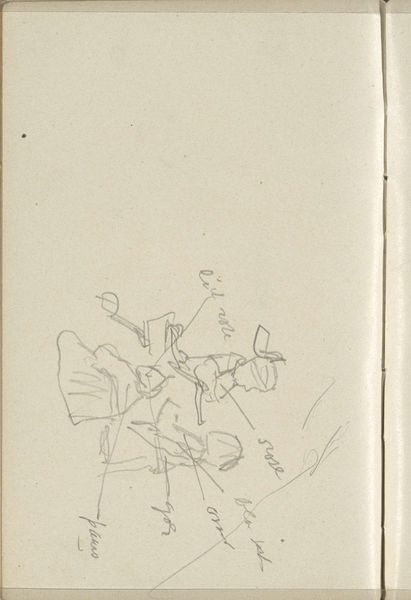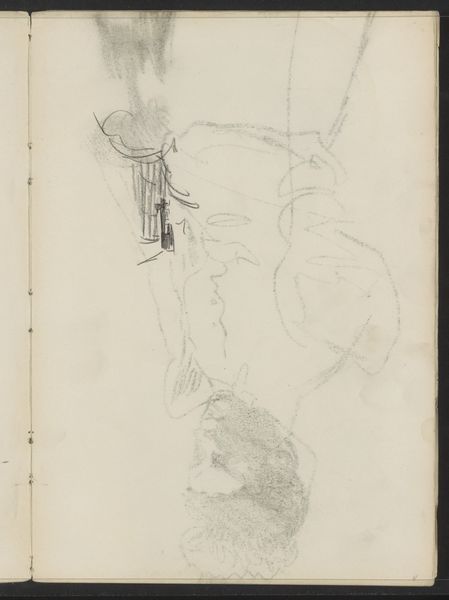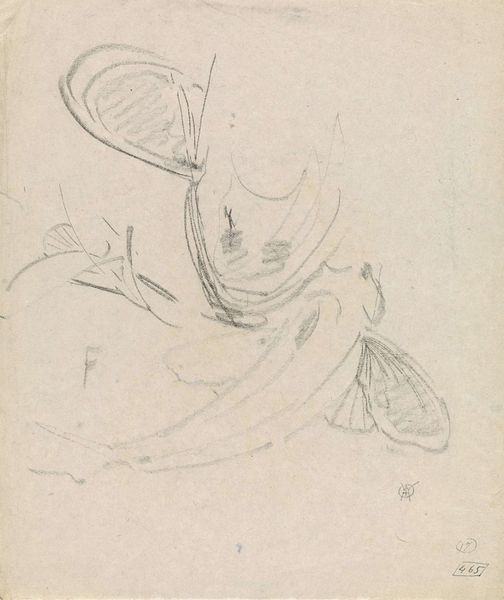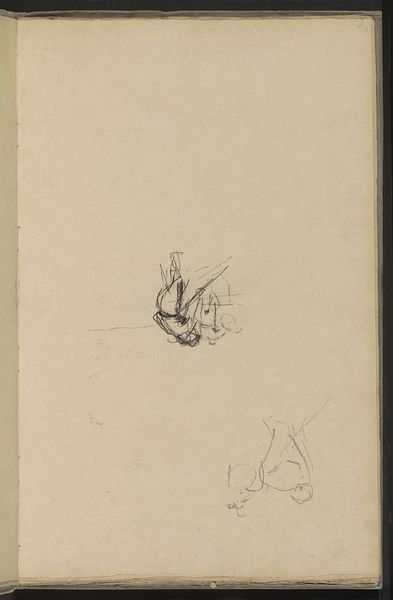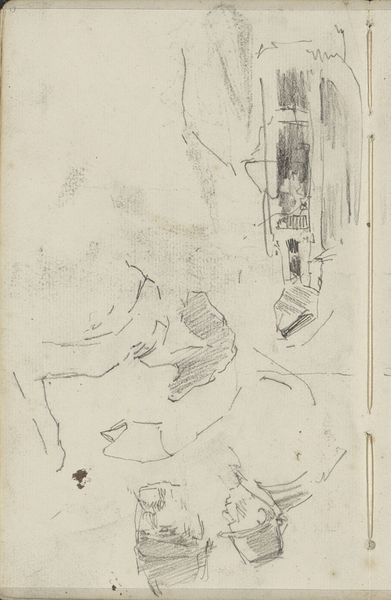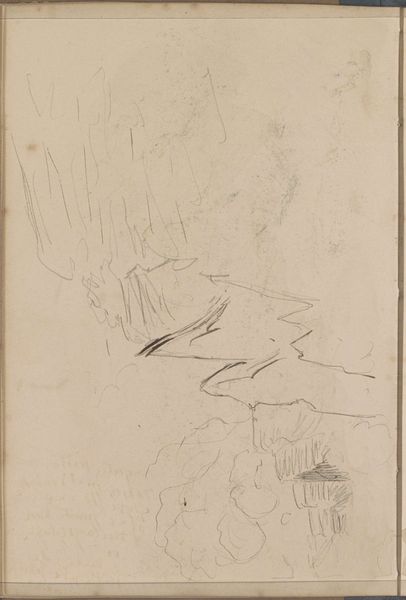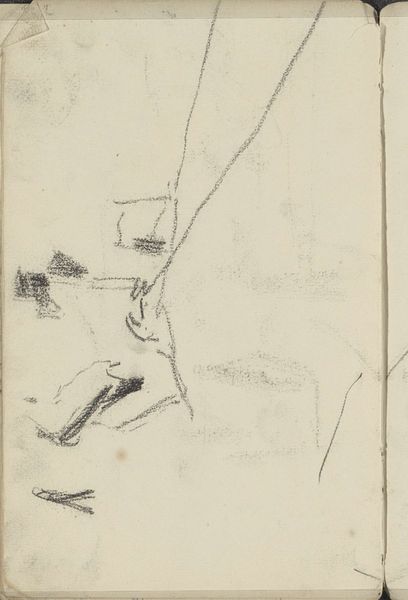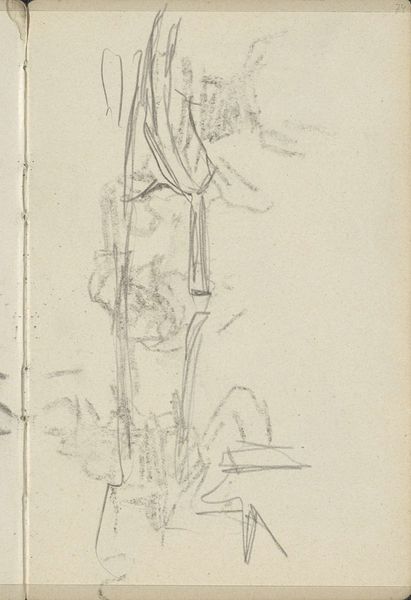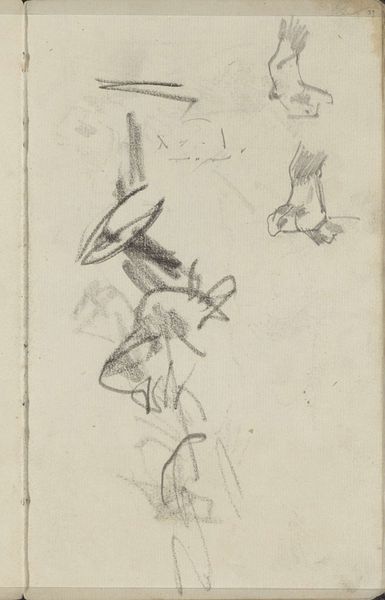
Copyright: Rijks Museum: Open Domain
Editor: Here we have "Studie," a drawing by George Hendrik Breitner, created sometime between 1886 and 1908. It's done in pencil and graphite. It has a very fleeting, ephemeral quality, like a memory just glimpsed. What can you tell me about this work? Curator: It’s interesting that you pick up on that sense of transience. Breitner, though often associated with Impressionism, held a more complex relationship with the rapidly modernizing Amsterdam. His drawings, often sketches like this, captured moments of everyday life, and were very influential at the time because photography was still evolving as a way of picturing life. Think about how new urban planning affected the lives of ordinary people during that period. Editor: So you're saying his work documented societal shifts. Curator: Precisely. He used drawing as a kind of social record, even a form of political observation. We must also think of this piece in its role as a ‘study’, as its name suggests. Think about the status of art education in this era; how it was funded and available to a diverse public or limited to a wealthy and therefore, socially powerful elite? It reminds us to view sketches such as this, within these boundaries of society at large. Does seeing the piece this way change your reading of the image at all? Editor: It does! Knowing about photography and art education at that time provides a deeper context and appreciation. Breitner wasn’t just capturing an image; he was making a statement by focusing on particular observations as he developed and refined a political view through his art. Curator: Exactly! It becomes less about aesthetics and more about visual documentation within very complex networks of power in the late 19th century. The very act of him choosing these specific aspects, tells us so much about Breitner, the elite educated class of the period and Dutch society. Editor: I’ll certainly be more thoughtful about that when considering art from this period in the future! Curator: As will I! These considerations can only enrich our understanding of art’s past and relevance in the world.
Comments
No comments
Be the first to comment and join the conversation on the ultimate creative platform.



